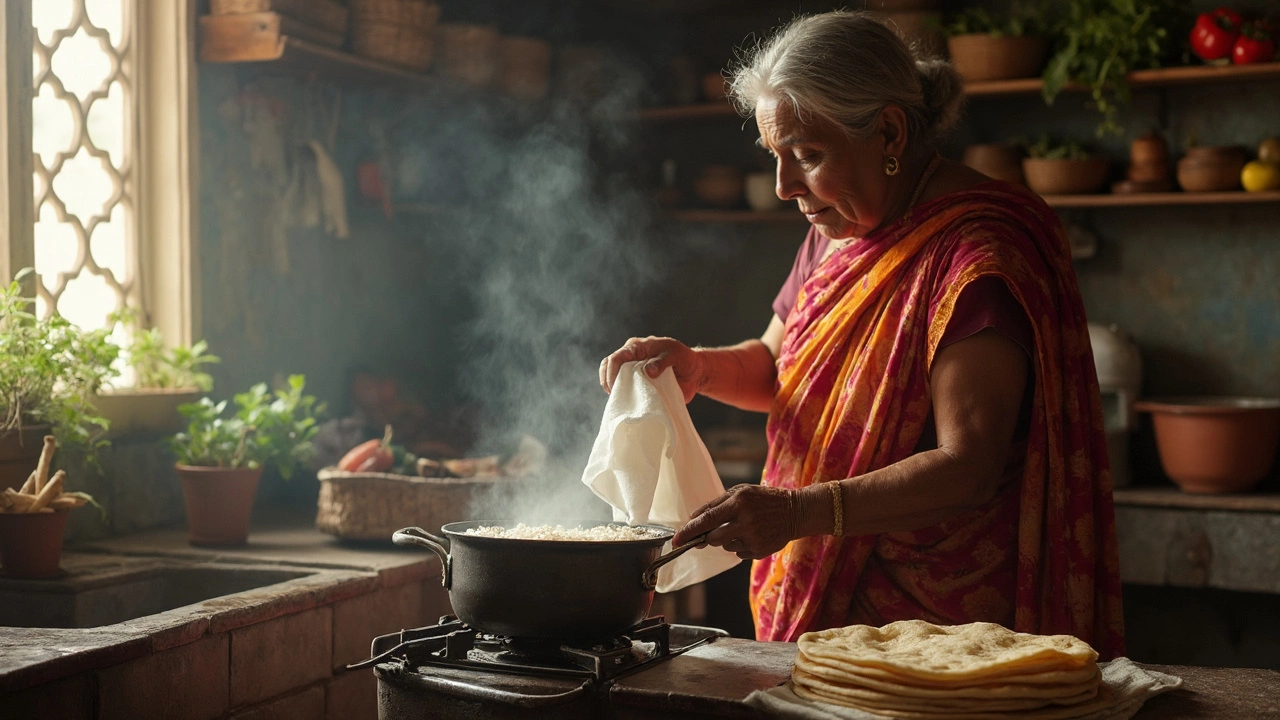Soft Rice: Tips for Perfectly Tender Grains
When cooking soft rice, rice that turns fluffy, tender and separates easily after cooking. Also known as tender rice, it’s the foundation of many beloved Indian dishes. Getting the right texture isn’t magic – it needs the right water‑to‑rice ratio, proper heat control, and a bit of patience. In practice, rice soaking, the act of immersing rice in water before cooking is a proven step that softens the grain and shortens cooking time. Soak the rice for at least 20‑30 minutes and you’ll notice a smoother grain that absorbs heat evenly. This simple step also helps to reduce the acrid aftertaste that sometimes appears with hurriedly cooked rice. Dosa batter, a fermented mixture of rice and urad dal used to make crisp South Indian crepes relies heavily on soft rice; the batter’s fluffiness comes from the rice particles breaking down during fermentation. When you blend soaked rice with urad dal, the softened starch releases sugars that feed the natural yeasts, creating the signature airy texture. In short, soft rice enables a better dosa, a lighter idli, and even a smoother curd rice dish.
How to Achieve Soft Rice Every Time
The first rule is to pick the right rice variety. Long‑grain basmati gives separate grains, while short‑grain sona masoori yields a slightly stickier finish – both can be soft if handled correctly. Measure your water carefully; a 1:2 ratio (one cup rice, two cups water) works for most Indian stovetop methods, but pressure cookers often need only 1.25 × water. Bring the water to a rolling boil, add a pinch of salt, then lower the heat to a gentle simmer. Cover the pot tightly – steam is your secret weapon. Let the rice sit covered off the heat for 5‑10 minutes; this resting period allows the moisture to redistribute, turning hard edges into uniformly soft grains. If you prefer a quicker method, the Instant Pot setting “Rice” automatically adjusts time and pressure for soft results. Just remember to release pressure naturally for at least 10 minutes before opening – rapid venting can cause the grains to break apart. For those who love the aromatic punch of fried rice, start with already soft rice, cool it in the fridge for an hour, then stir‑fry. Cold, soft rice won’t clump, and each grain stays distinct. Beyond the kitchen, cultural habits shape how we treat rice. In many South Indian homes, soaked rice is mixed with urad dal to make dosa and idli batter, illustrating the direct link between soft rice and fermented dishes. In the north, softened rice often ends up in kheer, where the gentle grain absorbs milk and sugar, creating a velvety dessert. Understanding these regional uses helps you decide how soft you want your rice – a little bite for biryani, a melt‑in‑your‑mouth feel for kheer, or just right for everyday meals.
Armed with the right rice, proper soaking, and precise water ratios, you’ll avoid common pitfalls like hard centers or mushy piles. The articles below dive deeper into side topics that complement soft rice: why adding soda to dosa batter works, how to troubleshoot flat roti, secrets of perfect urad dal soaking, and even the health angle of Indian vegetarian meals. Browse the collection to pick up targeted tips, tweak your technique, and explore how soft rice fits into a broader Indian cooking toolkit. Let’s get cooking – the next batch of fluffy rice is just a click away.

Why Put Towel Over Rice? Roti Pros Share the Secret
Ever wondered why experienced cooks toss a towel over rice right after cooking? This article uncovers the reason behind this old-school trick and how it connects to making perfect roti. Get practical tips to keep your rice soft, prevent it from drying out, and understand its surprising role in everyday roti-making. You'll also learn how to avoid common kitchen mistakes and make your rotis stay fresh longer.
- Chutney Recipes (13)
- General (11)
- Healthy Living (11)
- Easy Indian Recipes (9)
- Chicken Curry Recipes (9)
- Healthy Indian Snacks (8)
- Paneer Recipes (7)
- Dal Recipes (7)
- Street Food (7)
- Dosa Recipes (7)
-
Basic Chicken Marinade Formula: Simple DIY Recipe for Juicy Flavor
14 Oct 2025 -
Dairy-Free Vegetarian Indian Dishes: Flavorful Feasts
25 Jan 2025 -
Thick vs Thin Roti: The Ultimate Guide to Perfect Indian Flatbread
1 Aug 2025 -
What Makes Curry Rich and Flavorful: The Secret to Deep Curry Taste
3 Jul 2025 -
Why Is My Homemade Paneer Crumbly? Common Culprits and Easy Fixes
2 May 2025
10.05.25
Kaia Binari
0